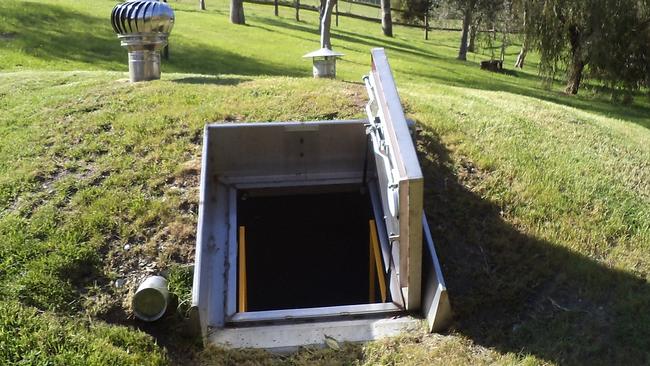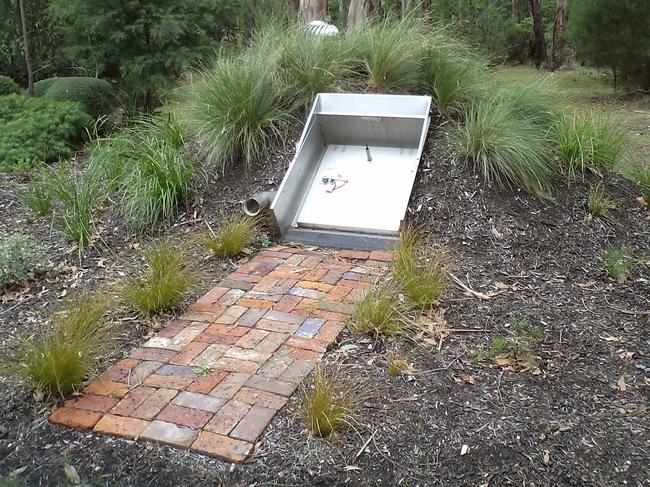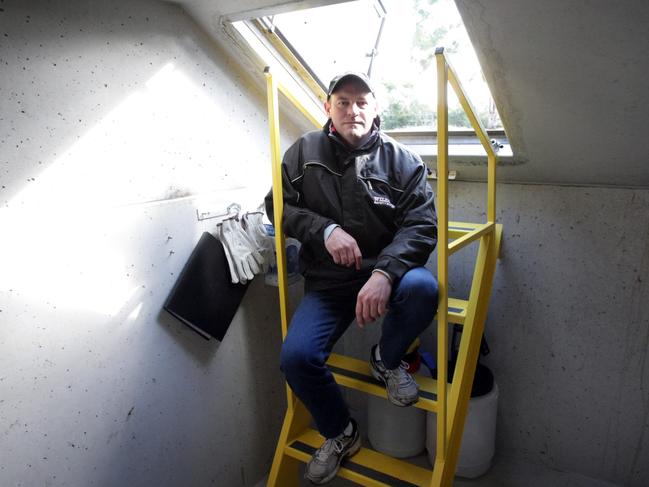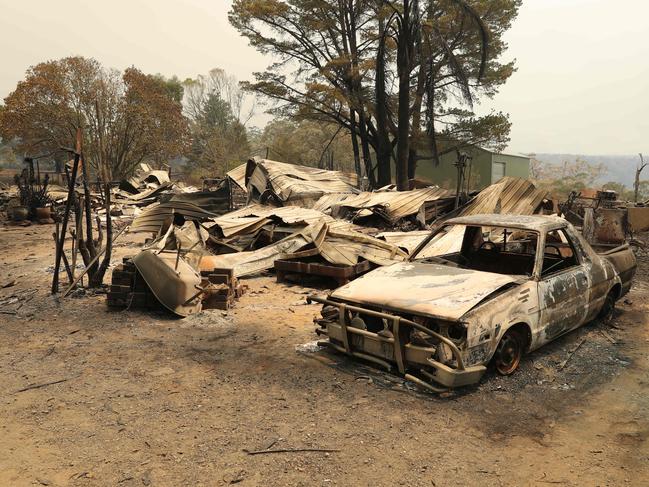NSW bushfires: Push to allow residents to install fireproof bunkers
The horror bushfire season, which claimed 25 lives and destroyed properties across NSW, has prompted a call for authorities to make it easier for residents to install fireproof bunkers in a bid to protect them from the unpredictable blazes.

NSW
Don't miss out on the headlines from NSW. Followed categories will be added to My News.
While Victorian homeowners need just a simple building permit for a lifesaving bushfire bunker, NSW residents desperate to protect themselves must jump through bureaucratic hoops to install the underground shelters.
The red-tape is forcing many to resort to building their own illegal shelters.
One of Anthony Tratt’s Wildlife Safety Bunkers was credited with saving the lives of couple who had also chosen to try to defend their home in Mallacoota in Victoria before retreating underground when the firefront passed over.

Mr Tratt has been installing the tornado-proof style bunkers across Australia since 2008, including in Kangaroo Valley in NSW.
Costing about $16,500 for a six-person shelter depending on the site, the bunkers provide enough oxygen for an hour if at capacity – more if fewer people are inside – which is more than the time it takes for a firefront to pass.
MORE FROM LINDA SILMALIS:
Staff coup: Kean takes Barilaro’s senior adviser
Devastating bushfire loss of historic assets revealed
However, the lack of national accreditation meant property owners outside of Victoria faced a multitude of legal hurdles before they could get the necessary approvals to have them installed.

As a result, he was aware of some resorting to building their own shelters, such as burying shipping containers, only for it to collapse, or digging out holes in the ground.
Mr Tratt said he had answered more than 100 calls since the start of the bushfire season with interested residents wanting to install a bunker.
“There is always an increase in inquires after any major bushfire but many we won’t hear back from again because it’s just too hard to get the approvals if they live outside of Victoria,” he told The Sunday Telegraph.
“We have had a number of families walking out of our bunkers alive after a fire has passed. They do work. We have done all the necessary testing under conditions far worse than these fires.
“The crazy thing is the fire authorities urge residents to take shelter when a fire is approaching, yet where do they go? Back in their fibro home? It should be easier for a bunker to be installed.”


In a letter to Mr Tratt, Joy and Neal Greig wrote how they sheltered in their bunker for more than three hours as the fire swept over them in Mallacoota.
While others evacuated to the beach, the elderly couple turned the sprinkler system on at their home before descending in to the bunker they had put in almost a decade ago.
“It was so black we could not see the bunker until we were within 3m of it,” they wrote.
“Inside was quite comfortable temperature-wise, and also smoke-free.
“At first it was black, then red/black and after about one-and-a-half hours it was an intense yellow/orange light (so bright it lit up the whole interior of the bunker).”
The couple survived, as did their home which they credited to the sprinkler system they also had installed.

The Australian Bushfire Building Council of Australia chief executive officer Kate Cotter is pushing for grants and incentives to retrofit property at highest risk, including the installation of bunkers.
“Private shelters (bunkers) are an excellent way to provide additional life safety contingency, particularly in areas close to bushland with limited escape routes,” Ms Cotter said.
Building standards in bushfire-prone areas will be a critical element examined in the recently announced NSW independent Bushfire Inquiry which will explore whether the existing Building Code of Australia needs to be amended to ensure households are better equipped during the bushfire season.

Government officials have already begun quietly seeking the advice of architects and building industry experts as they prepare to determine the way forward.
While the Code covers private bushfire shelters, owners in NSW also having to meet the provisions of the Environmental Planning and Assessment Act, NSW Rural Fire Service (RFS) regulations and the individual requirements of councils.
One leading Sydney architect believes the way of the future is a sealed concrete room within the house that could be used as normal day to day, but worked as a shelter during a fire emergency.

Award-winning Sydney architect Peter Stutchbury is already designing a house with an in-built shelter for a client in Bellingen on the State’s north coast.
Unlike a stand-alone bunker, the shelter functioned as an ordinary room, but could be sealed in event of a fire.
While the rest of the house could potentially be lost, the sealed room would be loaded with “all the valuables”.
“The idea is that it’s a usable space,” Mr Stutchbury said.
“In the event of a fire, if you do choose to stay and fight, there is enough oxygen to stay until the front has passed. Of if you choose to leave, it is a place to put all those possessions that mean a lot to us.
Originally published as NSW bushfires: Push to allow residents to install fireproof bunkers
